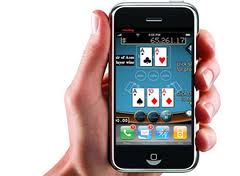Understanding the Number of Outs
Poker is not just a game of cards and best hands, but a game of multiple poker strategies combined into a single, perpetual game of skill. One of these oh-so-important poker strategies is understanding the number of outs you have to a better hand.
In this article, we'll teach you about outs, how to calculate them, and how understanding the number of outs you have available can make you a better poker player.
What are Outs?
An Out is any card that would improve your hand. When you are faced with a raw hand, such as 4 cards to a flush, every card of the same suit as your flush draw is considered an out. The same goes for a straight draw. If you have an Ace in the hole, and the flop brings no well suited or connected cards (meaning high straight/flush probabilities for other players), any Ace becomes an Out.
Essentially, without hitting an out, you are pretty sure you are beaten. Hitting an out gives you good reason to continue in the hand. Knowing the probability of hitting those Outs will not only give you a better idea of whether or not to continue, but it will help you decide exactly how much risk is warranted in doing so.
Understanding the Number of Outs
When counting your outs, you need to look at your hand, combined with the board, from all possible angles. If two hearts fall on the board, and you are holding two hearts in your hand, you have an obvious flush draw. Let's count the outs…
There are 13 hearts in a deck of cards. You've seen 4 of them, with 9 remaining unseen. All unseen cards are counted when calculating outs. Because you cannot see your opponents' hands, you must assume that all outs remain in the deck. So in this situation, you have 9 Outs.
But what if your two hearts are A-K, and the board is showing 4h-9h-Qc? Now how many Outs do you have? We can assume that someone has a queen for top pair. But your Ace and King are both potentially higher than the top pair, so any Ace or King would be a valid improvement. There are 3 unseen Aces and 3unseen Kings, giving you 6 more outs, on top of the 9 flush draw outs.
What if we use the same scenario, but change the board to 4h-10h-Qc (replacing the 9 with a 10). Suddenly, you have an inside straight draw as well. Any Jack becomes an out now, too. There are 3 unseen Jacks, so another 3 outs added for a grand total of 18 outs.
Now this is an extraordinary number of outs, and not a situation you'll come across often, but certainly something you don't want to miss because you didn't understand the number of outs you actually had working for you.
Using Outs to your Advantage
In the case above, we counted up a total of 18 Outs. We know this is a rather high amount, but how should that number affect your game play? Well, let's ask ourselves how many cards we could see, compared to how many of them are outs.
A standard deck has 52 cards. After the flop, you have seen 5 of them; your 2 hole cards and the 3 community cards. So we subtract 5 from 52 for a total of 47 unseen cards. If you have 18 outs after the flop, that's a 38.29% chance of hitting an out; higher than 1 in 3 cards. When it comes to poker odds and probabilities, that's a very high number, well worth investing in.
To know just how much of an investment is warranted, or worth the risk, we use Pot Odds. In the most basic terms, your percentage odds of hitting an out (38.29%) is the same percent of the pot you can confidently risk. In other words, if there's $100 in the pot, a proper bet/raise would be about $38.
You can "Learn more about Calculating Pot Odds Here"



